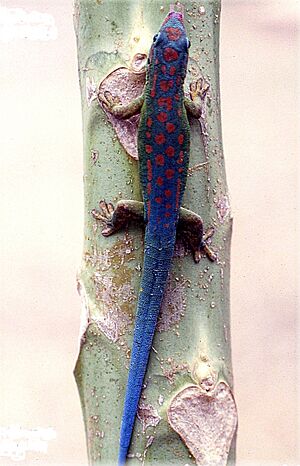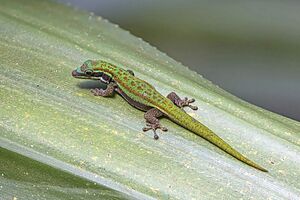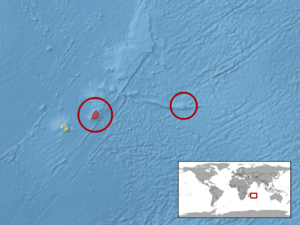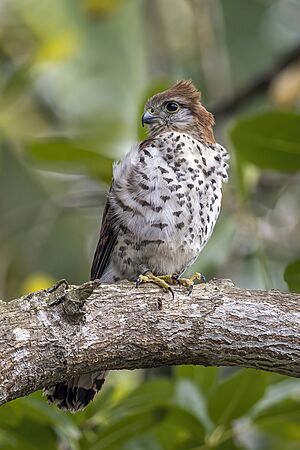Blue-tailed day gecko facts for kids
Quick facts for kids Blue-tailed day gecko |
|
|---|---|
 |
|
| Male, Senneville, Mauritius | |
 |
|
| Female, Ebony Forest Reserve Chamarel, Mauritius | |
| Scientific classification | |
| Genus: |
Phelsuma
|
| Species: |
cepediana
|
 |
|
| Synonyms | |
|
|
The blue-tailed day gecko (Phelsuma cepediana) is a colorful lizard from the gecko family. These geckos are active during the day, which is why they are called "day geckos." They live only on the island of Mauritius in warm, wet places. You can often spot them on different trees and bushes.
What's cool about these geckos is that they can change their colors and patterns as they grow. Their colors can also look different depending on what they are doing.
Contents
About the Name
The second part of the gecko's scientific name, cepediana, honors a French naturalist named Bernard Germain de Lacépède.
What They Look Like
The blue-tailed day gecko is a medium-sized gecko. It can grow to be about 3.75 to 5.5 inches (9.5 to 14 cm) long, including its tail. Female geckos are usually a bit smaller than the males.
Male blue-tailed day geckos are much brighter than females. Their bodies are light green or bluish-green. Their backs have a bright blue color with dark red spots and dashes. Males also have deep blue tails and sometimes blue on their faces.
Female geckos do not have the bright blue colors of the males. They have a bright green back with rust-colored spots. They also have a red stripe that goes from their nose to their shoulder.
Where They Live and What They Do
Blue-tailed day geckos live on the island of Mauritius. They are found all over the island. They prefer warm and moist places. You can often find them on fruit trees like coconut palms, banana trees, and papayas.
Most geckos in the Phelsuma group are active during the day. However, blue-tailed day geckos can change their habits. If there are artificial lights at night, they might start looking for food or even fighting and courting after dark. This change can make them easier targets for predators who hunt at night.
This gecko is one of only seven species from the Mascarene Islands that are still alive. It plays a very important role for a climbing plant called Roussea simplex, which also lives only in Mauritius. The gecko is the only animal that pollinates this plant and helps spread its seeds.
What They Eat
Blue-tailed day geckos eat different kinds of insects and other small creatures without backbones. They also enjoy licking soft, sweet fruit, pollen, and nectar.
The flowers of the rare Roussea simplex plant make a lot of nectar. Only the blue-tailed day gecko pollinates these flowers. The gecko also helps spread the plant's tiny seeds. It does this by licking a jelly-like substance from the fruit, which contains the seeds. The seeds then pass through the gecko and are spread in its droppings.
How They Behave
These geckos can be quite aggressive towards other geckos, even those of their own kind. If kept together in a small space, males might hurt females. In such cases, they need to be separated.
Colors for Protection
Young geckos often have bright tail colors. These colors can fade as they get older. Scientists think these bright tails might help protect them. If a predator attacks, the bright tail might make the predator aim for the tail instead of the body. Since geckos can regrow their tails, this helps them survive attacks.
How They Reproduce
Female blue-tailed day geckos lay eggs every 3 to 4 weeks. They usually lay two eggs at a time.
The females choose a safe, protected spot for their eggs. They often glue their eggs down to keep them extra safe. If the eggs are kept at a temperature of 28 degrees Celsius (about 82 degrees Fahrenheit), they will hatch in 40 to 45 days. Newborn geckos are usually around 1.6 inches (40 mm) long.
Who Eats Them
Blue-tailed day geckos often hide in thick patches of Pandanus plants to stay safe from predators. The critically endangered Mauritius kestrel is one of their main predators. This bird eats mostly Phelsuma geckos. Other birds that live only in Mauritius also hunt these geckos.
An ant called Technomyrmex albipes was brought to Mauritius from another part of the world. These ants can cause problems for the Roussea plant. They cover the plant's flowers with clay to protect tiny bugs that drink the plant's sap. The ants attack any animals that visit the plant, including the blue-tailed day gecko. This stops the gecko from pollinating the flowers and eating the fruit, which makes it hard for the Roussea plant to reproduce.
As Pets
Male blue-tailed day geckos are very popular as pets because of their bright colors. They can cost between $100 and $200 each. With good care, these geckos can live for up to 15 years.



